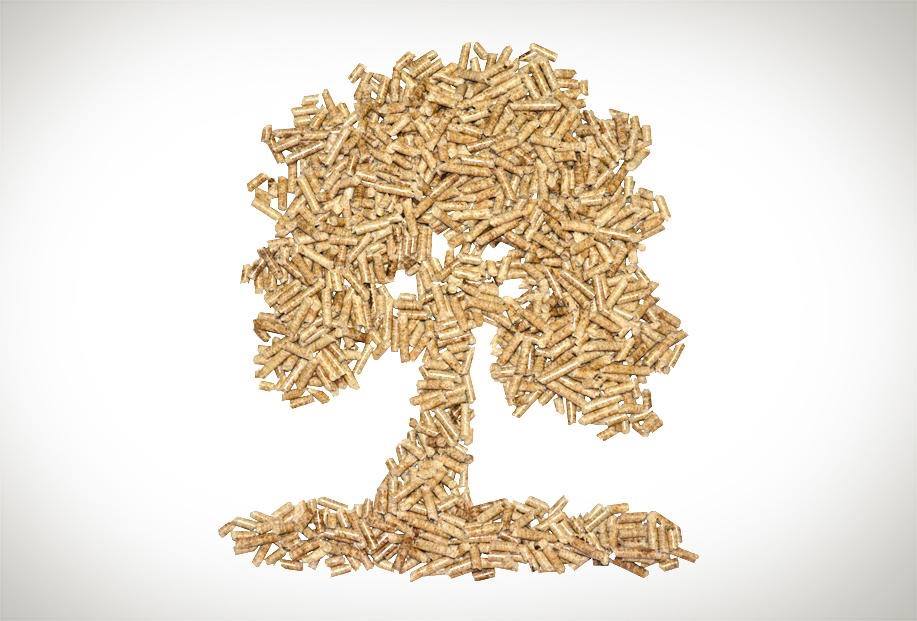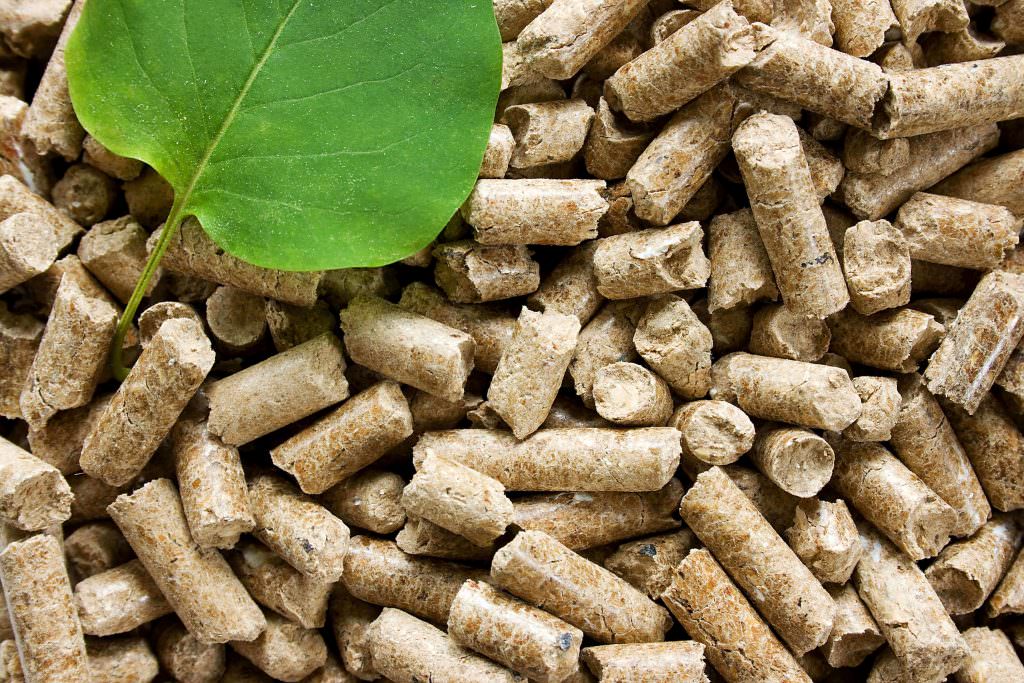Pellet is a type of solid fuel made from compressed organic material, such as wood, grass, or agricultural residues. Pellet fuel has many advantages over fossil fuels, such as lower greenhouse gas emissions, higher energy density, and easier handling and storage. Pellet fuel can be used for heating, cooking, and power generation in various appliances and facilities.
The history of pellet fuel dates back to the early 20th century, when different types of machines were invented to process feedstock into pellets. The first commercial pellet mills were imported from England to the United States in 1928, and since then, the pelleting process has evolved in size and capacity. Pellet fuel became more popular in the 1970s, when the energy crises stimulated the search for alternatives to fossil fuels. In the past few decades, the demand for pellet fuel has increased significantly in Europe and North America, driven by policy incentives and environmental awareness.

The roots of pellet fuel can be traced to the natural cycle of biomass in forests and fields. Biomass is the organic matter that comes from plants and animals, such as wood, leaves, grass, crops, and manure. Biomass contains stored energy from the sun that can be released when burned or converted into other forms of energy. Biomass is a renewable resource that can be replenished by natural processes or human activities. Biomass is also carbon neutral, meaning that it does not add net carbon dioxide to the atmosphere when burned, as long as the biomass is harvested sustainably and regrows at the same rate as it is consumed.
Some interesting facts about pellet fuel are:
– The average moisture content of wood pellets is below 10%, while firewood can have up to 50% moisture. This means that wood pellets have a higher heating value and burn more efficiently than firewood.
– The diameter of wood pellets is usually 6 mm or 8 mm, and the length is between 10 mm and 40 mm. The size and shape of pellets make them easy to transport and feed into stoves or boilers automatically.
– The global production of wood pellets was estimated at 36 million tonnes in 2019, according to the Food and Agriculture Organization of the United Nations (FAO). The largest producers were the United States (9.3 million tonnes), Canada (3.2 million tonnes), Germany (2.8 million tonnes), Sweden (1.8 million tonnes), and Russia (1.5 million tonnes).
– The global consumption of wood pellets was estimated at 35 million tonnes in 2019, according to FAO. The largest consumers were the United Kingdom (8.5 million tonnes), Germany (4.4 million tonnes), Italy (3.3 million tonnes), Denmark (2.8 million tonnes), and Japan (1.6 million tonnes).
– Pellet fuel is linked to sustainability and green technology because it can reduce greenhouse gas emissions, improve air quality, support forest management, create jobs, and diversify energy sources.
The production of pellet fuel involves several steps: raw material collection, drying, grinding, conditioning, pelleting, cooling, screening, packaging, and storage. Each step has its own challenges and opportunities for improvement.
One of the main challenges in pellet production is ensuring a consistent and adequate supply of raw material. The availability and quality of raw material depend on various factors, such as weather conditions, market prices, harvesting practices, transportation costs, and storage facilities. Pellet producers need to secure long-term contracts with reliable suppliers and diversify their feedstock sources to reduce risks and uncertainties.
Another challenge in pellet production is optimizing the drying process. Drying is essential to reduce the moisture content of raw material to a suitable level for pelleting (usually between 10% and 15%). However, drying is also costly and energy-intensive, accounting for up to 70% of the total energy consumption in pellet production. Pellet producers need to balance the trade-off between drying efficiency and drying cost by choosing appropriate drying methods (such as rotary drum dryers or belt dryers), adjusting drying parameters (such as temperature, airflow, and residence time), and recovering waste heat from flue gases or other sources.
A third challenge in pellet production is ensuring high pellet quality and durability. Pellet quality and durability depend on several factors, such as feedstock characteristics (such as species, particle size distribution, moisture content, ash content), pelleting conditions (such as temperature, pressure, die geometry), cooling conditions (such as airflow rate, temperature gradient), and storage conditions (such as humidity, temperature). Pellet producers need to monitor and control these factors to produce pellets that meet the specifications of customers and end-users.

Some opportunities for improvement in pellet production are:
– Using advanced technologies and equipment to increase production efficiency and reduce energy consumption. For example, using torrefaction or steam explosion to pre-treat raw material, using artificial intelligence or machine learning to optimize pelleting parameters, using sensors and online analyzers to measure pellet quality and performance, and using smart logistics and digital platforms to manage supply chain and inventory.
– Developing new products and markets to increase demand and value for pellet fuel. For example, producing black pellets that have higher energy density and lower moisture content than white pellets, producing torrefied pellets that have higher hydrophobicity and grindability than white pellets, producing blended pellets that mix biomass with other materials such as coal, plastics, or waste, and producing customized pellets that meet the specific needs of different sectors such as residential, commercial, industrial, or power generation.
– Adopting best practices and standards to ensure sustainability and traceability of pellet fuel. For example, following the principles and criteria of certification schemes such as the Sustainable Biomass Program (SBP), the Forest Stewardship Council (FSC), or the Programme for the Endorsement of Forest Certification (PEFC), implementing the chain of custody and mass balance systems to track the origin and flow of raw material and finished products, and reporting the greenhouse gas emissions and carbon savings of pellet fuel along the life cycle.
The future of pellet fuel is promising, as more countries and regions are committed to reducing their reliance on fossil fuels and increasing their share of renewable energy. Pellet fuel can play a key role in the energy transition by providing a clean, reliable, and affordable option for heat and power generation. Pellet fuel can also contribute to the circular economy by utilizing waste and residues from other industries and sectors.
About the future of pellet fuel
– According to a report by FutureMetrics, the global demand for wood pellets is expected to grow from 35 million tonnes in 2019 to 85 million tonnes in 2030, driven by the expansion of existing markets in Europe and Asia and the emergence of new markets in Africa and Latin America.
– According to a report by Grand View Research, the global market size for wood pellets was valued at USD 14.5 billion in 2020 and is projected to grow at a compound annual growth rate (CAGR) of 9.4% from 2021 to 2028, driven by the increasing adoption of pellet stoves and boilers for residential heating and cooking.
– According to a report by Transparency Market Research, the global market size for pelletized activated carbon was valued at USD 7.9 billion in 2019 and is projected to grow at a CAGR of 8.3% from 2020 to 2030, driven by the increasing demand for water treatment, air purification, food and beverage processing, pharmaceutical manufacturing, and metal recovery.

Web links that refer to good practice of pellet usage are:
– https://www.pelletheat.org/
– https://www.pelletcouncil.org.uk/
– https://www.pelletsatlas.info/
– https://www.pellet.org/
– https://www.bioenergyinternational.com/
